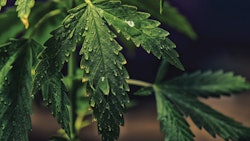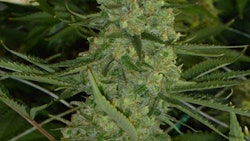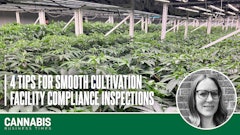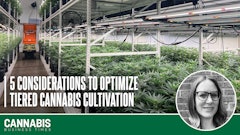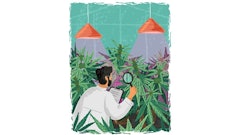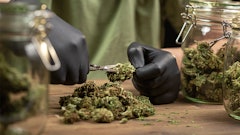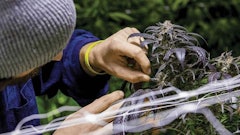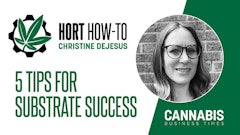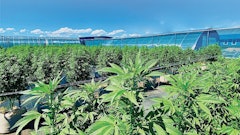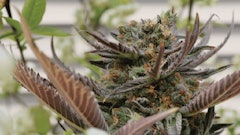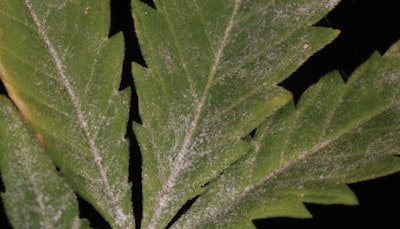
The Oregon Health Authority (OHA) Administrative Rules do not require testing for Aspergillus mold on cannabis,, according to the OHA’s “Technical Report: Oregon Health Authority’s process to decide which types of contaminants to test for in cannabis” (December 2015).
We think that will eventually become the standard approach across the United States, although we expect it will take time for cautious regulators to adopt it. The OHA echoed what many health authorities have recognized, which is that Aspergillus is not a serious threat to the typical human. We thought it would be beneficial to analyze some of the factors behind the OHA’s thinking, and hopefully, encourage other states to take a hard look at streamlining their contamination testing.
Growers in states maintaining mold and yeast testing, as well as any (read: all) with concerns for plant health, still need to know how to manage molds and yeasts, so, below, you’ll also find strategies to help in that effort.
What Are the Chances?
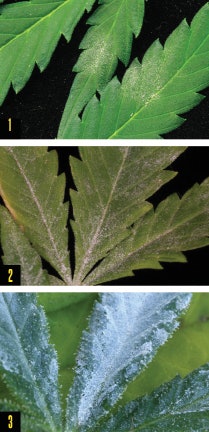
An industrial hygienist at Jewish National Health in Denver explained to us that spore counts have limited value in predicting health issues following exposure. The real bad guys are mycotoxins. The discussion around mycotoxins is so complex that scientists have not been able to draw a solid line between an organism’s presence and its production, if at all, of mycotoxins. And if it does produce them, no definitive answer exists as to how much the risk of infection rises. Variability in mycotoxin production and human immune systems—more often than not—determines who gets sick from exposure and who doesn’t.
The Centers for Disease Control and Prevention estimates there are 48 million cases of food-borne diseases in the U.S. annually. Bacterial infections carry the lion’s share of the blame for these cases. With a U.S. population of nearly 320 million, that’s up to 15 percent of the population that contracts one of these (largely bacterial) diseases annually. Staggering numbers, and they explain why bacterial contaminants in cannabis are not to be taken lightly.
In comparison, fungal diseases such as Valley Fever, occurring along our southwestern borderlands, and histoplasmosis and blastomycosis, which occur in the eastern United States, have been tracked and their nominal case rates are 2 to 4 per 100,000 people. That’s 0.004 percent of the population compared to the 15 percent for bacterial cases.
“Aspergillus can cause respiratory infections in individuals who inhale it if they are severely immune-compromised,” according to the OHA report, so the OHA advises such individuals to avoid smoking cannabis. “However,... [Aspergillus] is so common in the environment that a person could pick it up many different ways. A positive test result would not mean the product is unsafe for most uses for most people. Therefore, the work group recommended that cannabis products intended for smoking and other inhalation uses include a warning about this risk for people with suppressed immune systems,” the report explained.
The OHA also recognized Aspergillus as the only microorganism other than bacteria to pose any threat to humans. The majority of fungal organisms we have captured in air samples consist overwhelmingly of non-pathogenic Cladosporium and Pennicillium spp., which pose no threat to humans. If we add Aspergillus to the no-worries list, not much is left for cultured total mold and yeast testing to do.
Researchers also have cultured smoke from tobacco cigarettes purposely laced with A. fumigatus and found no viable spores, the New Scientist reported in 2000. The mechanism of that result is not understood, but it appears that smoking a contaminated product lowers virulence.
What about the fate of a spore in extracted oil? This was a question we asked extraction consultant Andrew DeFries, Ph.D., who said he has found that microbial contamination may still be viable in concentrates. DeFries also noted removing such contamination raises purity levels, but increases costs significantly. The inherent lack of sensitivity to Aspergillus spp. and exposure of the mold to the sterilizing effects of downstream processing steps further lowers overall consumer risk.
There’s Data in Them There Hills
It seems to us, however, that the cannabis industry is in the middle of what are, or could be, clinical trials, but no one seems to be taking data on the test subjects. Data will ultimately help align regulation to the actual risk posed by cannabis ingestion. The sooner the industry gets that data, the sooner it has the proof cannabis is helpful and safe.
Outreach to medical card holders seems appropriate, but there are also legions of cultivation workers who are the most exposed and at-risk demographic in this industry. Voluntary reporting of illnesses contracted since becoming a patient/worker could quickly reveal any negatives such as widespread respiratory complaints. It could also reveal nothing at all, and not finding a smoking gun argues for relaxation of testing. We’d like to see a partnership between industry and regulators, such as the OHA, that would study and fund an effort. We think consumers would, too.
Protect Your Crops: Preventing Contamination
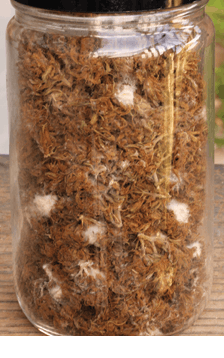
But if molds and yeasts are not a health concern, they are a quality and business concern. Non-toxic powdery mildew is the most prevalent fungus in cannabis cultivation, and it can dilute potency, reduce clarity and alter the color of extracts.
Obviously, prevention of an infestation is key. Mold and yeast prevention is fairly simple. When a fungal spore lands on a plant, it will either grow or remain inert. Inert spores collect according to their concentration in the outside air, air exchanges and interior airflows, and this accumulation along with active growth of organisms can be measured in several ways.
Preventive mold and yeast controls start with facility design for isolation, using HEPA filtering and/or UV treatments to remove airborne particles, and dealing with the contamination that settles onto plants, floors, walls and all horizontal surfaces through regular and thorough cleaning. Clean-ability should be a key design requirement for all facilities, and rigorous cleaning should be a daily devotion.
Post-harvest controls include managing temperature and water-activity level during the drying and curing process. The OHA also noted the role water activity plays in mold and yeast prevention. High water-activity levels are favorable to mold and yeast growth and, in fact, are the primary mold and yeast knobs you can turn in the drying/curing stages. The concept of monitoring water activity comes from the food industry, which also offers us some extreme post-harvest treatment, like radiation. Radiation treatments ensure that products will pass all microbial tests and have an extended shelf life, but it also ensures increased costs and public-acceptance issues.
Measurements
The simplest way to monitor contamination is by visual inspection. By pressing sampling tape onto a leaf, a sample can be gathered and sent to a lab for reading or, with a little training, read in house. You don’t need to be a microbiologist to recognize density.
Spore traps provide a similar visual tool for airborne contaminants. More expensive cultured tests tell you what the specific viable organisms were in the sample, but unless you need to know the exact species of mold, stick with visual tests. Regardless of the test performed on samples, laying the results onto a floor plan is an effective way to see any hot spots, and possibly the reason for them, such as proximity to a leaky hose under a bench.
Manage and Repeat
When high levels are detected, growers must address them or roll the dice in testing (as well as on plant health). Leaks in a building’s envelope should be plugged, and opening and closing of doors to cultivation spaces should not allow organisms to float or be carried in on workers’ clothing. Simply mopping floors has been shown to lower airborne organisms significantly, and covering plants with a trash bag before harvesting can cut down on facility contamination as plants are moved between spaces. How much a grower needs to do to contain contamination is dependent on the local limits for molds and yeasts, as well as the level of contamination and consequential threat to plants and potential risk to workers.
Trim areas exemplify our concern for workers. Levels of airborne organisms and particulates in trim can reach levels that can irritate eyes, mucus membranes, throat and lungs. Protective gear and dramatic airflow changes are steps our clients have taken to decrease exposure.
Look Closer
Molds and yeasts are a part of cannabis cultivation, and cultivators should inform themselves about the organisms as well as the threats they actually pose to consumers.









